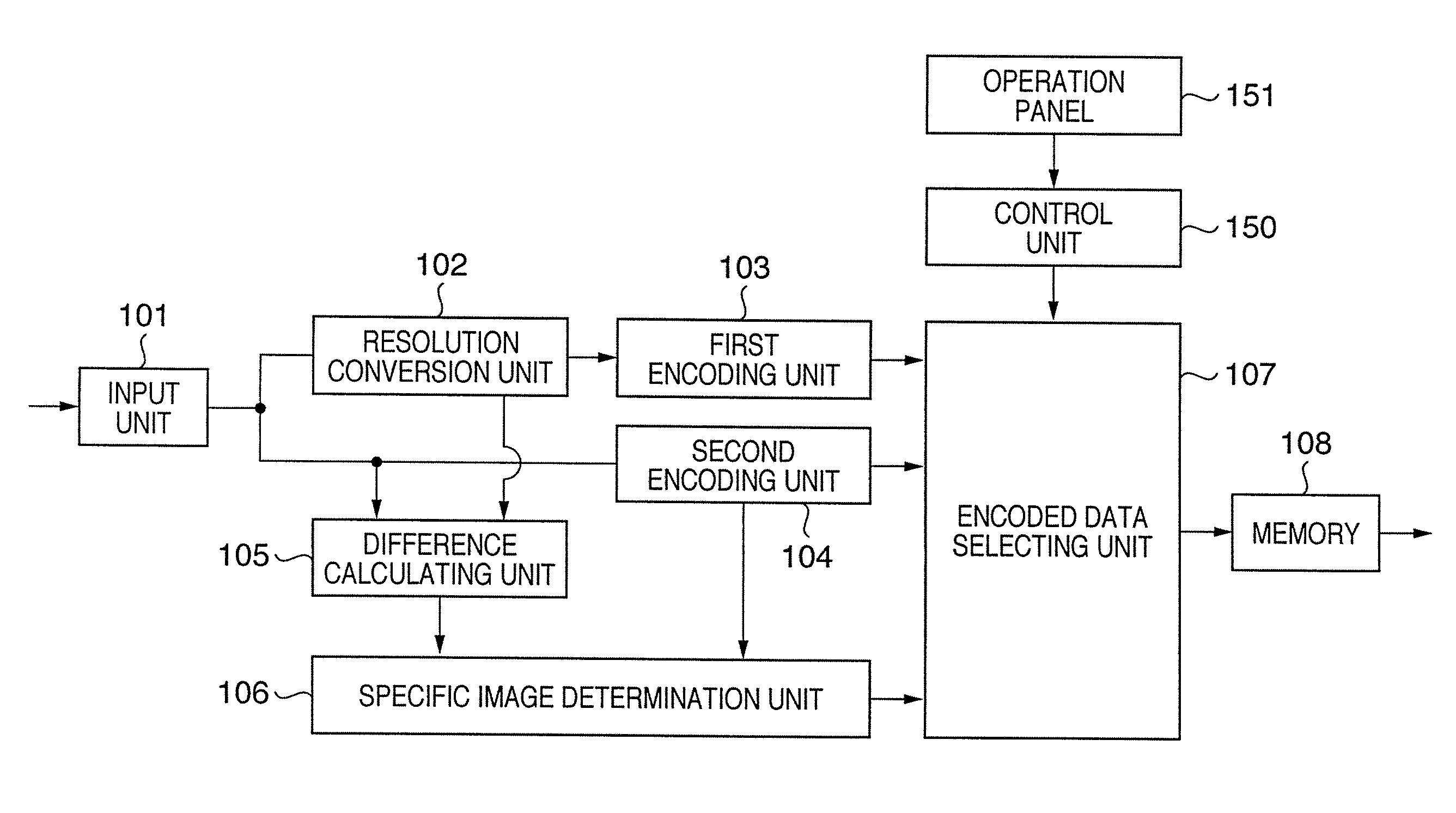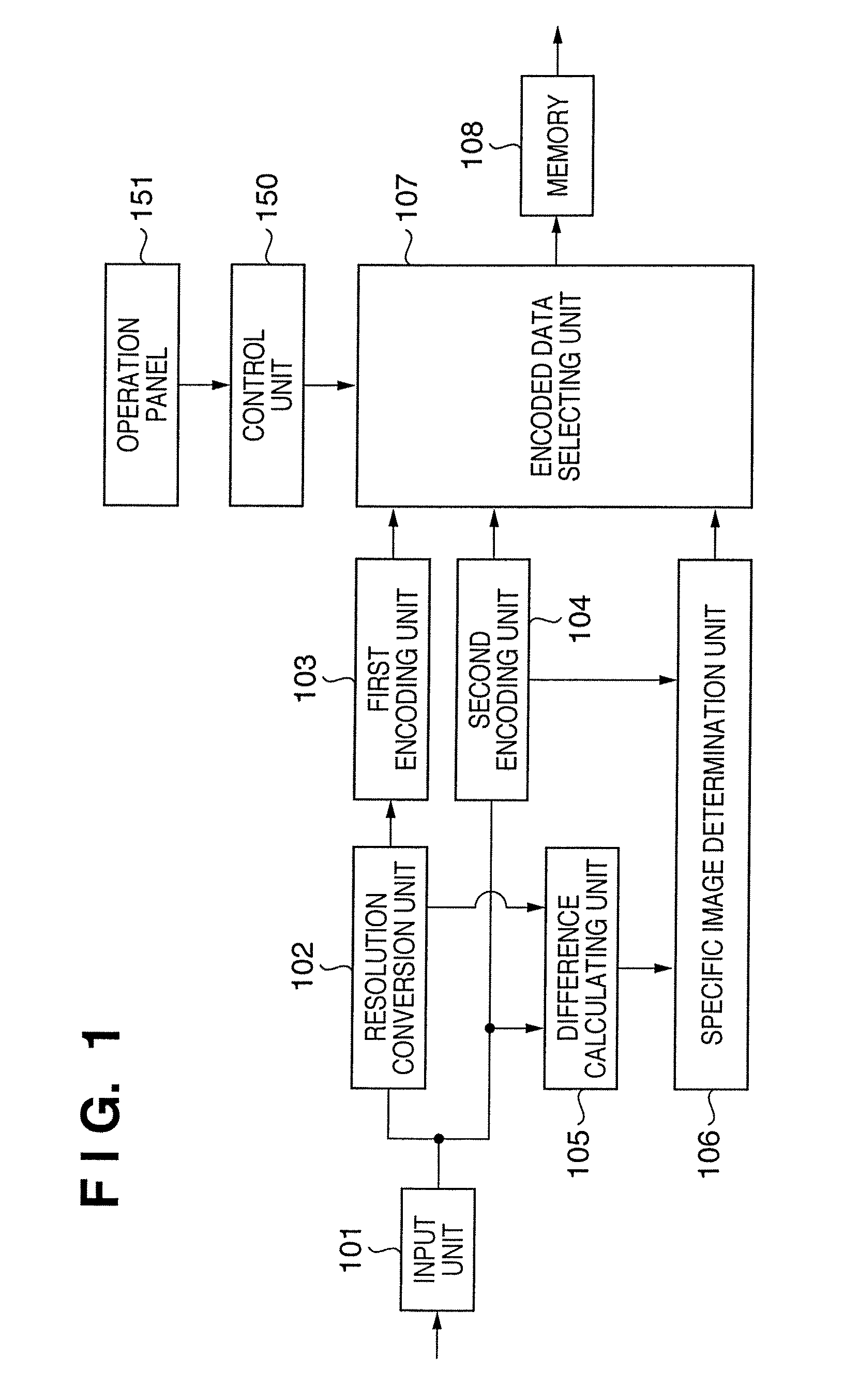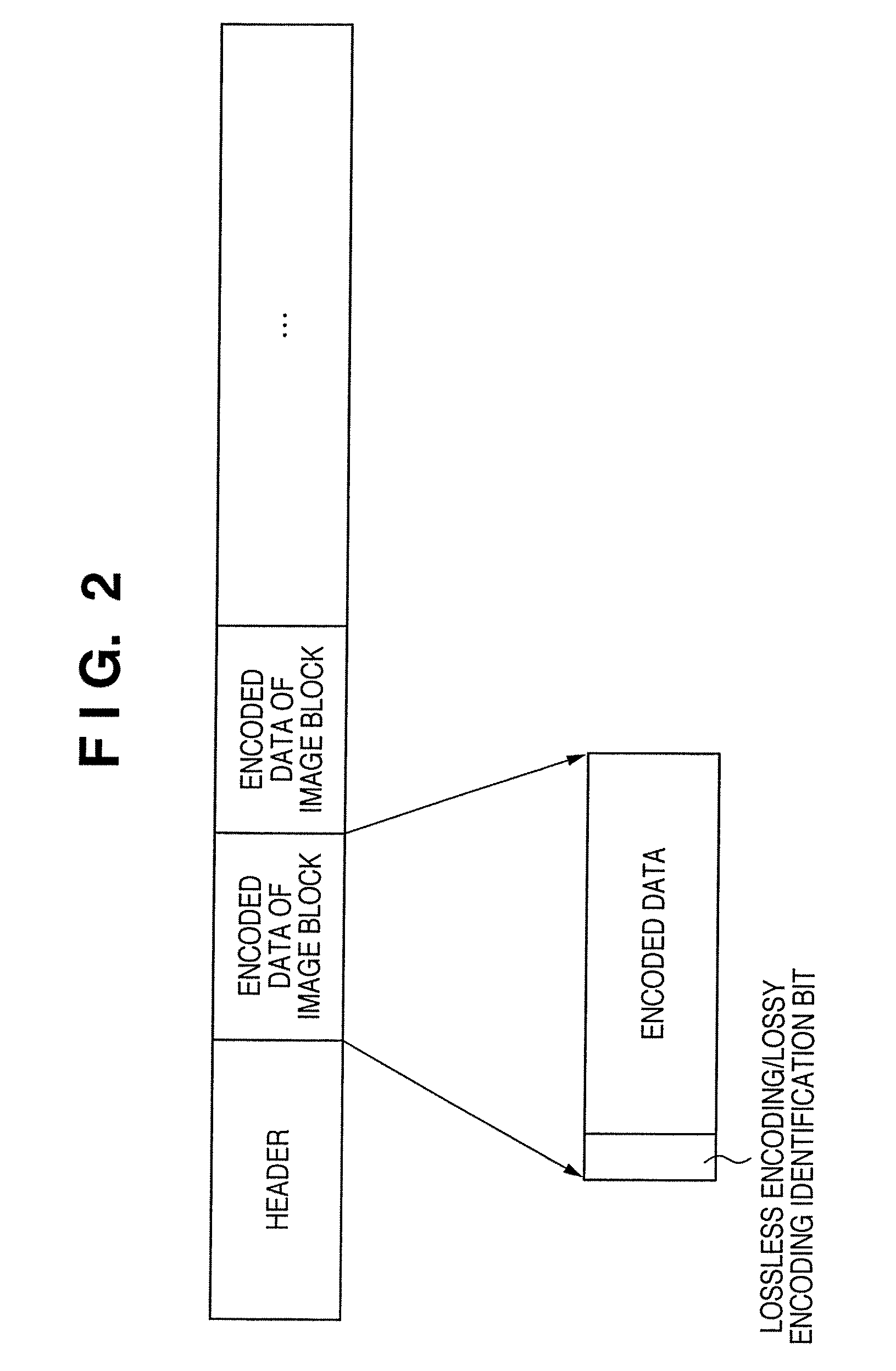Image processing apparatus and control method therefor
a technology of image processing and control method, applied in the direction of electrical apparatus, instruments, computing, etc., can solve the problems of unnatural boundaries and noticeable effects, and achieve the effect of high compression ratio
- Summary
- Abstract
- Description
- Claims
- Application Information
AI Technical Summary
Benefits of technology
Problems solved by technology
Method used
Image
Examples
first embodiment
Modification of First Embodiment
[0074]The first embodiment has been described on the basis of the arrangements shown in FIGS. 1 and 3, but equivalent processing can be implemented by software. An example of this will be described below.
[0075]FIG. 7 is a block diagram showing the arrangement of an information processing apparatus such as a personal computer. Referring to FIG. 7, reference numeral 1 denotes a CPU which controls the overall apparatus; 2, a ROM storing a BIOS and a boot program; 3, a RAM which is used as a work area for the CPU 1; 4, a hard disk drive (HDD) which stores an OS (Operating System) and application programs associated with image encoding processing / decoding processing; 5, a keyboard; 6, a pointing device such as a mouse; and 7, a display control unit which incorporates a video memory for rendering an image to be displayed and a video controller which renders an image in the video memory under the control of the CPU 1, reads an image from the video memory, an...
second embodiment
[0095]FIG. 10 is a block diagram showing the arrangement of an image processing apparatus according to the second embodiment. The same reference numerals as in FIG. 10 denote elements having the same functions in FIG. 1. Assume that a memory 108′ has a sufficient capacity for the storage of one-page encoded data. In addition, an input unit 101′ performs re-input operation from the start of one page in response to an instruction signal from a control unit 150′ even in the middle of encoding processing of one page.
[0096]The input unit 101′ in the second embodiment will be described as a unit which inputs image data from a renderer which generates an output image in accordance with print data or the description of a document file.
[0097]When outputting the encoded data of an image block to the memory 108′, an encoded data selecting unit 1071 notifies the control unit 150′ of information indicating the code amount of the encoded data.
[0098]A first encoding unit 103′ performs lossy encodi...
third embodiment
[0119]Assume that in the third embodiment, the upper limit value of the amount of image data after compression is determined as in the second embodiment.
[0120]An image processing apparatus characterized by performing code amount control by changing the determination condition for a specific image area if the code amount of image data exceeds the upper limit value will be described.
[0121]For example, some type of application (typically, Office 2003 PowerPoint (registered trademark) available from Microsoft, U.S.A.) allows to select a transparency at the time of execution of semitransparency processing. Assume that the transparency is high. In this case, even if a halftone dot pattern is overlaid on a given image, a background image can be clearly seen. Assume that the transparency is low. In this case, when a halftone dot pattern is overlaid on a given image, since a background image portion is not emphasized much, a large change in image quality does not occur even if subsampling or...
PUM
 Login to View More
Login to View More Abstract
Description
Claims
Application Information
 Login to View More
Login to View More - R&D
- Intellectual Property
- Life Sciences
- Materials
- Tech Scout
- Unparalleled Data Quality
- Higher Quality Content
- 60% Fewer Hallucinations
Browse by: Latest US Patents, China's latest patents, Technical Efficacy Thesaurus, Application Domain, Technology Topic, Popular Technical Reports.
© 2025 PatSnap. All rights reserved.Legal|Privacy policy|Modern Slavery Act Transparency Statement|Sitemap|About US| Contact US: help@patsnap.com



